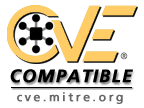Executive Summary
| Informations | |||
|---|---|---|---|
| Name | CVE-2022-31127 | First vendor Publication | 2022-07-06 |
| Vendor | Cve | Last vendor Modification | 2024-11-21 |
Security-Database Scoring CVSS v3
| Cvss vector : CVSS:3.1/AV:N/AC:L/PR:N/UI:R/S:C/C:L/I:L/A:N | |||
|---|---|---|---|
| Overall CVSS Score | 6.1 | ||
| Base Score | 6.1 | Environmental Score | 6.1 |
| impact SubScore | 2.7 | Temporal Score | 6.1 |
| Exploitabality Sub Score | 2.8 | ||
| Attack Vector | Network | Attack Complexity | Low |
| Privileges Required | None | User Interaction | Required |
| Scope | Changed | Confidentiality Impact | Low |
| Integrity Impact | Low | Availability Impact | None |
| Calculate full CVSS 3.0 Vectors scores | |||
Security-Database Scoring CVSS v2
| Cvss vector : (AV:N/AC:M/Au:N/C:N/I:P/A:N) | |||
|---|---|---|---|
| Cvss Base Score | 4.3 | Attack Range | Network |
| Cvss Impact Score | 2.9 | Attack Complexity | Medium |
| Cvss Expoit Score | 8.6 | Authentication | None Required |
| Calculate full CVSS 2.0 Vectors scores | |||
Detail
| NextAuth.js is a complete open source authentication solution for Next.js applications. An attacker can pass a compromised input to the e-mail [signin endpoint](https://next-auth.js.org/getting-started/rest-api#post-apiauthsigninprovider) that contains some malicious HTML, tricking the e-mail server to send it to the user, so they can perform a phishing attack. Eg.: `balazs@email.com, Before signing in, claim your money!`. This was previously sent to `balazs@email.com`, and the content of the email containing a link to the attacker's site was rendered in the HTML. This has been remedied in the following releases, by simply not rendering that e-mail in the HTML, since it should be obvious to the receiver what e-mail they used: next-auth v3 users before version 3.29.8 are impacted. (We recommend upgrading to v4, as v3 is considered unmaintained. next-auth v4 users before version 4.9.0 are impacted. If for some reason you cannot upgrade, the workaround requires you to sanitize the `email` parameter that is passed to `sendVerificationRequest` and rendered in the HTML. If you haven't created a custom `sendVerificationRequest`, you only need to upgrade. Otherwise, make sure to either exclude `email` from the HTML body or efficiently sanitize it. |
Original Source
| Url : http://cve.mitre.org/cgi-bin/cvename.cgi?name=CVE-2022-31127 |
CPE : Common Platform Enumeration
| Type | Description | Count |
|---|---|---|
| Application | 1 |
Sources (Detail)
Alert History
| Date | Informations |
|---|---|
| 2024-11-28 14:10:57 |
|
| 2022-07-14 21:27:13 |
|
| 2022-07-07 00:27:20 |
|






